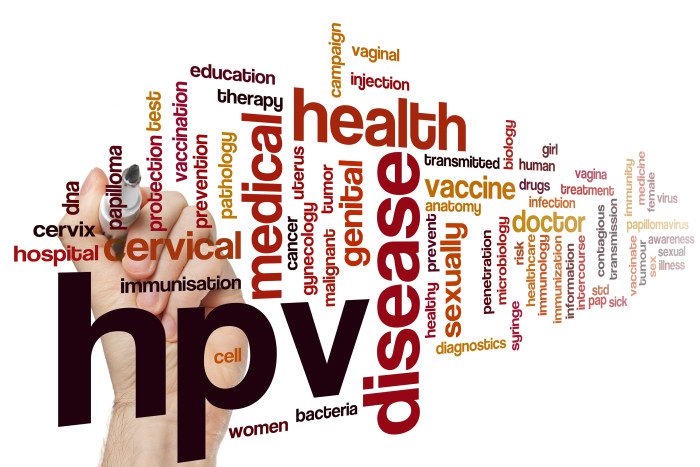
Back before the 1940s when George Papanicolaou, a Greek pathologist, developed the pap smear, cervical cancer was a leading cause of death among women in the United States. But even though we are better at catching precancerous cells with pap smears, around 4,000 women die in this country each year from cervical cancer.
Almost all cases of cervical cancer are caused by the human papillomavirus (HPV), which also causes genital warts, and some types of penile, anal and mouth cancers. If we can stop HPV, we can stop most cases of cervical cancer and other serious and problematic diseases. With the HPV vaccine, we are well on our way to doing that.
What is HPV?
Human papillomavirus is a sexually transmitted virus. Unlike many other sexually transmitted infections, most people are unaware when they are infected. In fact, the CDC reports about one in four Americans is infected with at least one strain of HPV.
Many people show no ill effects from HPV when they are infected, and their immune system clears the virus. Others may develop genital warts or, over a period of ten to twenty years, cervical or other type of cancer. Still others carry the virus with no ill effects, except that they may unknowingly spread it to sexual partners.
The way an individual is affected has to do with their immune system’s response to the virus, and which strain of virus they are infected with. Of particular concern are HPV 16 and 18. These strains are responsible for 70 percent of the cervical cancer cases.
Because so many people are unknowingly affected, it is almost impossible to stop the spread of the virus.
How Does the HPV Vaccine Work?
The HPV vaccine is made from tiny proteins that are similar in structure to the proteins on the outside of an HPV virus. These proteins trigger an immune reaction in the person who receives the vaccine. Once this is triggered, the immune system will “remember” these proteins. If introduced to them again through an actual HPV particle, it will be able to use that memory to mount a rapid attack on the HPV and prevent infection.
The HPV vaccine doesn’t include live virus, killed virus, or even DNA from HPV. So it can’t mount its own attack and cause infection in the individual receiving the vaccine. Here’s a great little video from the Cancer Council of Victoria about how it works:
Does the HPV Vaccine Really Work?
The HPV vaccine was introduced in 2006 for preteen girls. This age was selected because it will catch most everyone before they become sexually active, and children this age will typically mount a robust immune response to the vaccine. At the time of introduction, the vaccine worked against four types of HPV, including 16 and 18, the ones that cause such a large number of cervical cancers. Since that time, more strains have been added to the vaccine, so we can expect its efficacy to improve.
But, even with the original vaccine that contained four strains, results have been very good. Research published in the March issue of Pediatrics shows a 64 percent decrease in the 14-19 year age group and a 34 percent decrease in the 20-24 year age group of sexually active females compared to their unvaccinated counterparts.
So yes, the vaccine works, but only 40 percent of females and 20 percent of males who are recommended to have the vaccine have done so.
Who Should Get the HPV Vaccine?
The current recommendations are for all 11- and 12-year-old males and females to receive the three shot series of immunizations for HPV. In addition, females up to age 26 and males up to age 21 who have not been previously immunized against HPV should get the vaccine.
If you live in the Greenville, TX area and have questions about the HPV vaccine, we would be happy to discuss the risks, the benefits and concerns you may have about it. Please contact us to schedule a consultation.

